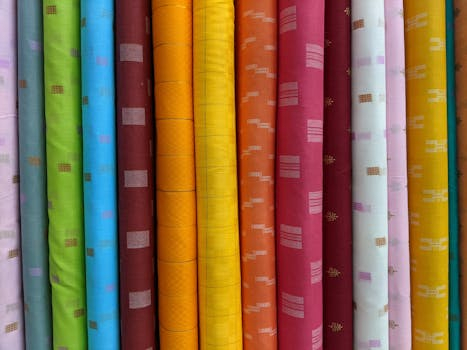Biomimetic Textiles: Nature-Inspired Fabrics Revolutionizing Design
The world of fashion and design is constantly evolving, with new trends and innovations emerging at an astonishing pace. One such trend that has taken the industry by storm is biomimetic textiles, also known as nature-inspired fabrics. These textiles are revolutionizing the way we think about design, drawing inspiration from the incredible world of nature. In this article, we will delve into the world of biomimetic textiles and explore how they are changing the face of fashion and design.
The Concept of Biomimicry
Biomimetic textiles are based on the principle of biomimicry, which is the study and imitation of nature’s systems and designs in order to solve human problems. This concept has been around for centuries, with examples such as Leonardo da Vinci studying birds in flight to design his flying machines. However, it was not until the 20th century that biomimicry started to gain attention in the world of science and technology.
Today, biomimicry has expanded beyond just solving technological problems and has found its way into various industries, including fashion and design. By looking to nature for inspiration, designers are able to create innovative and sustainable solutions.
Nature-Inspired Fabrics
Nature is a constant source of inspiration for designers, with its diverse and complex systems offering endless possibilities. Biomimetic textiles take this inspiration to a whole new level, by creating fabrics that mimic the properties and functions of natural materials.
One of the key properties that biomimetic textiles mimic is self-cleaning. In nature, animals and plants have evolved unique ways to keep themselves clean. For example, the surface of lotus leaves has tiny nanostructures that cause water to roll off, taking any dirt or debris with it. This same idea has been applied to fabrics, creating self-cleaning materials that require less frequent washing.
Another fascinating property that biomimetic textiles emulate is the ability to adapt and respond to external stimuli. For example, the skin of chameleons can change color to match their surroundings. Similarly, fabrics have been developed that can change color in response to changes in temperature, light, or humidity. This opens up a whole new world of possibilities for design and functionality in clothing and accessories.
Sustainable Solutions
One of the major challenges facing the fashion industry is its impact on the environment. The production of traditional fabrics involves the use of harmful chemicals, excessive water consumption, and energy-intensive processes. Biomimetic textiles, on the other hand, offer a more sustainable alternative.
By imitating the processes and designs found in nature, biomimetic textiles can be produced using more eco-friendly methods. For example, spider silk, which is known for its strength and flexibility, can now be recreated in labs without the need to harm or capture spiders. This eliminates the environmental impact of traditional silk production, which involves boiling silkworms to extract their silk.
Applications in Fashion and Design
Biomimetic textiles have a wide range of applications in the world of fashion and design. From clothing and accessories to furniture and even architecture, these fabrics are changing the way we think about design. By combining cutting-edge technology with natural inspiration, designers are able to create unique and functional products that are both aesthetically pleasing and environmentally friendly.
One example of biomimetic textiles in fashion is the use of biodegradable materials, such as algae, to create sustainable and compostable clothing. Another example is the use of 3D printing technology to create complex and intricate designs, inspired by the structure of natural materials.
In Conclusion
Biomimetic textiles are revolutionizing the world of fashion and design, offering sustainable and innovative solutions that draw inspiration from nature. These fabrics not only offer functional benefits but also open up endless possibilities for creativity and design. As we continue to explore and understand the wonders of nature, the potential for biomimetic textiles is truly limitless.











